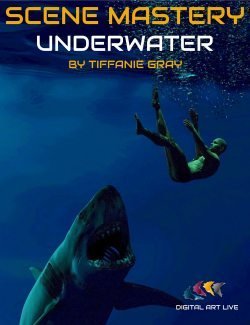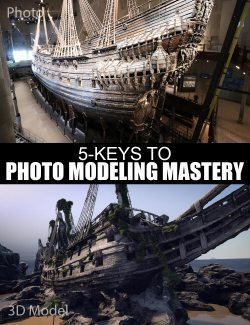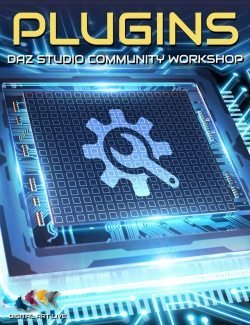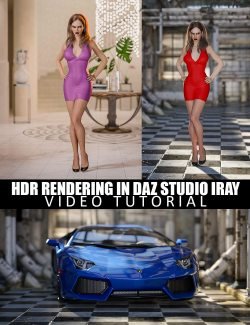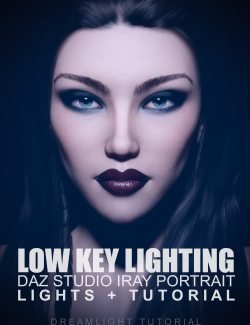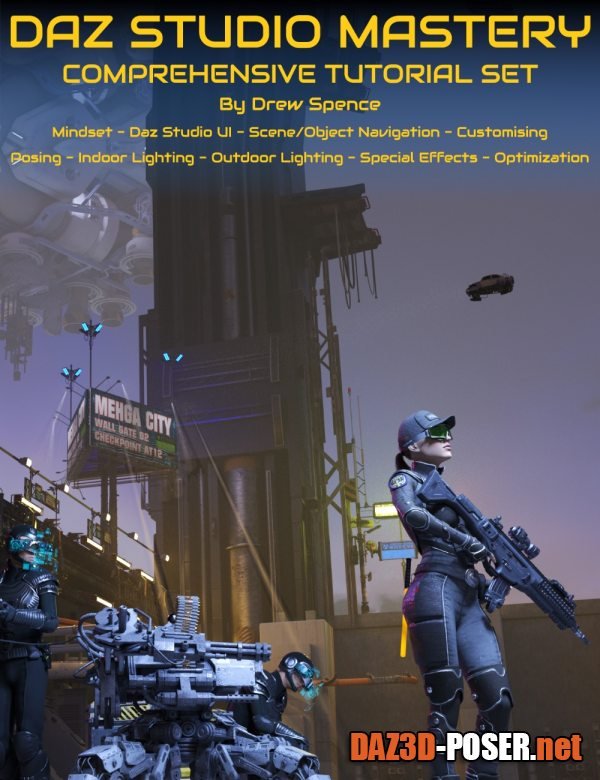
Title: Other – DAZ Studio Mastery: Tutorial Set – download for Daz Studio or Poser
Description:
Do you want to transform your ideas into mesmerizing 3D art? Do you wish to harness the full potential of Daz Studio but find its range of features overwhelming? This tutorial set provides the solution crafted with you in mind. It breaks down the complexities of Daz Studio into digestible segments. With guidance from Drew Spence, you will journey from being a Daz Studio novice to a proficient user, mastering Daz Studio with increased confidence. Discover how enjoyable and gratifying 3D creation can truly be!
Drew Spence has used Daz Studio to create hundreds of renders to publish multiple comic book series. As a result he's streamlined his workflow, hand-picked assets and curated tools that have made creating with Daz Studio faster and with less pain points along the way. Through this course, he shares his approach to creating art with Daz Studio revealing his mindset, top techniques and resources.
This tutorial product is aimed at beginners and intermediate users of Daz Studio.
Total Duration
11 hours and 22 minutes across a 9 part HD MP4 video set.
Part 1: Mindset, Daz Studio UI and Scene/Object Navigation
Embrace the ART Methodology: ART as a process for successful artistic creation, where "A" stands for Approach (reflecting the artist's attitude, values, and definitions), "R" for Rules (understanding the fundamentals of the medium), and "T" for Techniques (learning and applying individual components of creating the artwork).
Daz Studio basics and UI: Daz interface, installing and managing content, viewports and workspaces, Align, navigator, translation, scale and surface selection tools. Active pose and spot render tools, lighting basics, and cameras.
Master Digital Art Tools & Techniques within Daz Studio: How to maximize the use of Daz Studio by considering the organization and management of your digital content, creation of unique layouts, understanding the properties of 3D objects, and working with different types of texture maps.
Improve Workflow with Daz Studio Add-Ons and Techniques: Explore a suite of advanced tools within Daz Studio, such as Mesh Grabber, Active Pose, depth of field effects, texture replacement, and scripting for better control and enhanced creativity. Learn about realistic lighting simulation using iRay Engine and HDRI.
Maximize Daz Studio's Lighting and Rendering Features: Learn how to create professional, realistic lighting in your 3D scenes with Daz Studio's extensive lighting options. Understand the principles of lighting and apply them using light sets, dome rotation, light probes and more to achieve the desired mood and perception in your scenes.
Part 2: Customizing Characters
Loading a Character and Starting to Customize: Creating distinct, engaging characters while maintaining the balance of care, control, and content in your artwork. It discusses how unique characters can be designed using various features and settings, with the focus on customization for individuality.
Advanced Techniques and Tools for Skin Customization: Learn advanced tools and techniques, including 'Skin Builder', 'Layered Image Editor (LIE)', 'Materials Wizard', and the 'Merchant Resources', for creating realistic and unique skin textures, colors, and features for your characters.
Deep Dive into Costume and Prop Design: Considering 3D clothes and props with varied textures and depths, utilizing shaders and 'kit bashing'. It also offers insights into how material and color changes, unique prints or textures, and adjustments in texture tiling can create more individualized and narrative-specific character outfits.
Creating Realistic Scenes and Backgrounds: This training guides you through setting up realistic scenes and backgrounds, explaining how details like lighting, environment settings, HD details, and backgrounds can be adjusted for enhanced character representation, and how to solve common issues related to these settings.
Guidance on Advanced Artistic Techniques: The course includes advanced techniques for bettering your digital art, such as hair manipulation, adding special effects with third-party softwar and effectively using lighting and environment settings in your scenes, providing a comprehensive guide to achieving a more realistic and immersive result.
Part 3: Posing Characters
Master Daz Studio: Learn to operate Daz studio on three levels: technical (interface), execution (functions and features), and abstract (thinking approach). Harness the power of built-in tools and scripts to enhance your workflow, control character poses, manage lighting, and tweak render settings.
Develop Authentic Character Poses: Dive into the intricate art of posing, understanding the importance of details, and interaction with the environment. Use scripts and utilities to fine-tune character poses, manipulate facial expressions, and create realistic body movements. Learn how to mix and match different pose sets for unique and dynamic outcomes.
Master Lighting and Rendering: Explore Daz's extensive lighting features, use render presets to control quality and speed, and apply the 'IRAE Render Throttle' for varied preview settings. Use the Render Suite for advanced controls including HDR lighting and post-production adjustments.
Enhance Expressions and Emotions: Harness the power of complex facial expressions to change a character's mood or scene's vibe. Understand how to start from a neutral point, deal with extreme expressions, and use tools like the Expression Mixer to create nuanced and unique emotions.
Adopt a Creative and Analytical Approach: Understand the artistry of Daz, how attention to minute details creates expressive poses, and how mastering the mathematical aspects of pose creation can improve precision. Embrace the freedom art offers for unexpected results, and learn from studying and reverse-engineering other creators' work.
Part 4: Indoor Scene Lighting
Master the Art of Lighting: Understand and manipulate three types of lighting (point light, spotlight, emissive surface) in Daz Studio for realistic scenes, with focus on key elements and balance between realism and artistic vision.
Control Your Colors: Emphasize the critical importance of accurate monitor calibration to ensure consistent color representation across all viewing platforms and make the artwork appear as intended.
The Details Matter: Develop an eye for detail in set layout, prop handling, and character positioning, which can enhance scene realism and drive the narrative forward.
Learn through Experimentation: Adopt a hands-on approach to learning, through layering different renders, testing various light settings, and even pushing character movements beyond natural limits for specific effects.
Understand Your Tools: Gain comprehensive knowledge of Daz Studio's versatile tools, such as 'parenting' objects for coordinated movements, using light kits for character emphasis, and manipulating properties of scenes for dramatic impact.
Part 5: Outdoor Scene Lighting
Outdoor Scene Lighting Fundamentals: Learn the basics of digital art creation, from understanding the foundational principles to harnessing the pre-made resources in Daz's toolset for efficient scene creation.
Scene Composition: Develop skills in scene composition, exploring techniques like editing nodes, duplicating hierarchies, and using tools like geo shells for special effects.
Lighting and Environment Control: Gain mastery over environmental settings and lighting controls, using tools like domes, spheres, HDRI features, and manipulating light sources for desired effects.
Professional Rendering Techniques: Understand professional rendering techniques, such as camera functions, depth of field, tone mapping, and post-production adjustments, to enhance your artwork's quality and realism.
Beyond Default Settings: Learn to go beyond default settings to create unique artwork, manipulating sun and sky settings, backgrounds, and inserting props from external sources for creative control and thematic continuity.
Part 6: Lighting and IES Profiles
Understanding of IES profiles: a useful tool used to generate realistic and custom lighting effects, providing the ability to control light intensity, spread, color and shape in a 3D rendering scene.
Benefits of IES profiles: Efficiency and speed compared to other methods like emissives, making them a more resource-efficient choice for creating complex lighting effects.
Mood: Learn how to use lighting strategically in a scene to set the mood, highlight specific areas, and create various ambiences; lighting in interior design and its impact on behaviour in real-world environments
Emissive lighting and shaders: create unique effects and enhance the mood of a scene. This includes understanding the unique properties of Material Definition Language (MDL) shaders, which can provide glowing effects on objects.
The Light Manager Pro tool: allows for comprehensive control over the lighting within a scene, offering features like adjusting brightness, intensity, and color temperature collectively for all lights, streamlining lighting setups, and saving time in lighting management.
Part 7: Special Effects and Billboards
The importance of time and resources in CGI art creation, emphasizing efficient hardware and use of products to optimize rendering time and improve efficiency. It also underscores the balance between passion and resource utilization when investing in art tools.
in-depth insights into a variety of tools and techniques such as the use of billboards, 3D props, and 2D planes in 3D modeling. The course elaborates on methods to create realistic scenes, including the use of masking, emissive lights, IES profiles, and special effect lighting.
Scene preparation and post-production work. Understand how to manipulate light effects, use high-quality resources for more convincing results, and transition to post-work where specific light effects are added for greater visual impact.
Creativity and adaptation in Daz Studio art creation: Use of free resources, creative application of tools beyond their intended scope, and kit-bashing technique for new scene creation. It also covers camera angle experimentation and pre-planning for effects like flares or explosions.
Post-production enhancements. They learn about layering additional elements, manually creating effects like bloom, integrating special effects using software tools, and maintaining non-destructive saving practices. Adding textural details in post-production work for more appealing and immersive visuals.
Part 8 : Optimisation strategies in Daz Studio
Mastering Artistic Confidence and Validation: Learn how to navigate the intricate world of art creation and appreciation, understanding the importance of the 'awe' factor, self-confidence, and validation from peers, critics, and fans.
Craft vs Art, Tools and Techniques: Discover the difference between 'craft' and 'art', the intelligent use of tools, and how to turn something ordinary into extraordinary art. Understand how to balance light and speed in rendering for optimal results.
Optimization Strategies in Daz Studio: Explore various optimization techniques for 3D art creation in Daz Studio. Gain knowledge on using 'instances', low-resolution characters, third-party products, billboards, and composite rendering to create complex scenes without overwhelming the system.
Memory Management and Scene Planning: Understand how to effectively manage hard drive space and system memory while dealing with high-quality images and low-resolution models. Learn the importance of planning and scene optimization in rendering high-quality images and objects.
Creative Evolution through Failure and Experimentation: Embrace the power of failure, iteration, and experimentation in your artistic journey.
Home Page: LINK


